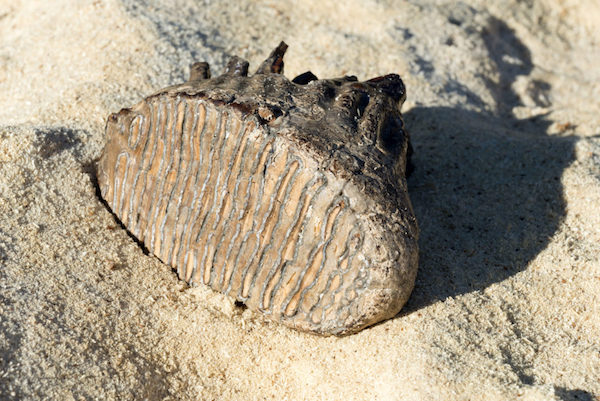Slaves First Identified Elephant Fossils in America
“The slaves at Stono were originally from Angola or the Congo, the habitat of living Loxodonta elephant species of Africa. The teeth they found at Stono belonged to a great Columbian mammoth that had died thousands of years earlier and was buried in the swamp. Mammoth teeth are flat with ridges (unlike the sharp, pointed teeth of mastodons) and they closely resemble the ‘grinders’ of living African elephants. African people had often observed the skeletons, skulls, and teeth of elephants in Africa, and that experience allowed them to correctly identify the mammoth teeth in America. They must have been excited to find the remains of a familiar African animal so far from home.”—Dr. Adrienne Mayor
Collected Curiosities
By Dr. Adrienne Mayor

STANFORD California—(Weekly Hubris)—15 July 2020—African slaves dug up some colossal teeth while working in a swampy field on Stono Plantation (South Carolina) in about 1725. The English botanist Mark Catesby visited Stono to view the amazing discovery. His hosts, the plantation owners, told him that the great molars were all that was left of a giant victim of Noah’s Flood from the Bible. At that time, that was the common explanation for all oversized fossils in Europe and the American colonies. But Catesby also questioned the slaves on the plantation. He wrote that the “Opinion of all the Negroes, native Africans, who saw the teeth” was unanimous. These were the molars of a familiar animal from their homeland. The slaves insisted that the big teeth belonged to an elephant. Catesby agreed with the slaves. Unlike the white masters, Catesby had examined some enormous molars of an African elephant in a London museum.
In Paris, the famous French naturalist Georges Cuvier was intrigued by Catesby’s account. Cuvier was working on his new theory that huge fossils around the world belonged to prehistoric creatures, mammoths and mastodons. He was gathering evidence to show that these animals were the ancient ancestors of today’s elephants, and that they had all perished in a catastrophe ages ago. Cuvier was impressed, declaring that “les nègres” in America had correctly recognized a fossil elephant species before any European naturalist realized that extinct mammoths were related to living elephants.
The slaves at Stono were originally from Angola or the Congo, the habitat of living Loxodonta elephant species of Africa. The teeth they found at Stono belonged to a great Columbian mammoth that had died thousands of years earlier and was buried in the swamp. Mammoth teeth are flat with ridges (unlike the sharp, pointed teeth of mastodons) and they closely resemble the “grinders” of living African elephants. African people had often observed the skeletons, skulls, and teeth of elephants in Africa, and that experience allowed them to correctly identify the mammoth teeth in America. They must have been excited to find the remains of a familiar African animal so far from home.
About 50 years later, in 1782, workmen digging in salt marshes in Virginia unearthed teeth and “Bones of uncommon size.” Major Arthur Campbell sent these to Thomas Jefferson, with a letter saying that “Several sensible Africans have seen the tooth, particularly a fellow” owned by Jefferson’s neighbor. “All [the Africans] pronounced it an Elephant.” That means that the teeth belonged to a mammoth such as that at Stono, not to a mastodon. Once again, African slaves correctly identified the fossils that bewildered their white masters. Jefferson had a hard time accepting Cuvier’s idea that all that these behemoths were extinct. He wanted to believe that they still lived somewhere in the New World and hoped that Lewis and Clark would find herds of great American elephants grazing in the Northwest Territories.

Editor’s Note: This essay was originally published in 2014 in “Wonders and Marvels.”

